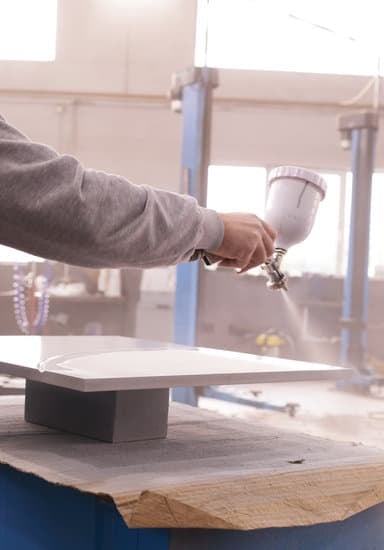Are you wondering what home improvement project to do first? Prioritizing your home improvement projects is crucial for the overall success and efficiency of your renovations. This guide will help you navigate through the decision-making process, from assessing needs versus wants to determining when to hire a professional contractor.
When it comes to improving your property, it’s essential to identify the most urgent improvements while considering long-term goals. Addressing essential repairs and ensuring home safety and maintenance should take precedence over other projects. Additionally, focusing on renovation projects that can add the most value to your property and increase energy efficiency are also key factors in deciding which home improvement project to tackle first.
This comprehensive guide will walk you through various aspects of home improvement projects, from enhancing curb appeal through landscaping and exterior improvements, to renovating kitchens and bathrooms for better functionality. Making informed decisions about your renovation priorities can lead to a more successful and satisfying outcome.
Assessing Needs vs Wants
When it comes to deciding what home improvement project to do first, it is essential to assess your needs versus your wants. Identifying the most urgent improvements is crucial in order to prioritize tasks and allocate resources effectively. Whether you are looking to address essential repairs, increase property value, or simply enhance the functionality of your home, prioritizing your home improvement projects can save you time and money in the long run.
One way to identify the most urgent improvements is by conducting a thorough inspection of your home. Look for any signs of damage or wear and tear that could compromise the safety and structural integrity of your property. This may include addressing issues such as leaky roofs, faulty electrical systems, or plumbing problems. By prioritizing essential repairs, you can ensure that your home remains a safe and secure place for you and your family.
In addition to assessing immediate needs, it’s also important to consider long-term benefits when identifying the most urgent improvements. For example, upgrading appliances and improving insulation can lead to significant energy efficiency and cost savings over time. While these projects may not be as pressing as essential repairs, they can have a substantial impact on your monthly utility bills and overall comfort in the home.
Home Safety and Maintenance
According to a survey by HomeAdvisor, addressing essential repairs like these can also yield a high return on investment, with an average ROI of 63%. This means that not only are you ensuring the safety and functionality of your home, but you are also increasing its value in the long run. For example, fixing a leaky roof not only prevents water damage but can also add an average of $10,500 to your home’s value.
Another important aspect of home safety and maintenance is keeping up with regular inspections and maintenance tasks. This includes checking for mold and mildew, servicing HVAC systems, inspecting the foundation for cracks, and maintaining fire safety equipment. Neglecting these essential maintenance tasks can lead to costly repairs down the road.
| Home Repair | Average ROI |
|---|---|
| Repairing leaky roof | 63% |
| Faulty electrical wiring | N/A |
| Plumbing issues (leaks/clogs) | N/A |
Increasing Property Value
When considering what home improvement project to do first, it is essential to assess which renovations will add the most value to your property. Prioritizing renovation projects that can increase the resale value of your home is a smart investment decision. Here are some renovation projects that can add significant value to your property:
- Kitchen Remodel: Upgrading the kitchen is one of the most impactful improvements you can make. Consider replacing old appliances, installing new countertops, and updating cabinets for a modern look.
- Bathroom Renovation: Remodeling outdated bathrooms can greatly enhance the overall value of your home. Upgrading fixtures, tiling, and adding energy-efficient features like low-flow toilets can make a big difference.
- Adding a Deck: Outdoor living spaces are highly sought-after by potential buyers. Building a deck or expanding an existing one can create an attractive selling feature for your home.
Investing in these renovation projects can bring a high return on investment when it comes time to sell your home. It’s important to research current design trends and popular features that buyers are looking for in order to make informed decisions about which improvements will contribute the most to your property’s value.
Improving the overall aesthetic and functionality of your home through strategic renovations will not only make your living space more enjoyable but also attract potential buyers should you decide to sell in the future. When deciding what home improvement project to do first, focusing on those that maximize property value is a wise choice.
Energy Efficiency and Cost Savings
When considering which home improvement project to do first, upgrading appliances and insulation for energy efficiency and cost savings should be a top priority. These improvements not only help reduce utility bills, but also contribute to a more sustainable and environmentally-friendly home.
Assessing Energy Usage
Before starting any upgrade, it’s important to assess the energy usage of your home. This can be done through an energy audit, which will identify areas where energy is being wasted and where improvements can be made. Understanding your current energy consumption will help prioritize which appliances and areas of insulation need the most attention.
Upgrading Appliances
Old and inefficient appliances can significantly impact your home’s energy consumption. Upgrading to Energy Star certified appliances can result in substantial savings on electricity or gas bills. Consider replacing older refrigerators, washing machines, dishwashers, and HVAC systems with newer, more energy-efficient models.
Improving Insulation
Proper insulation is essential for maintaining a comfortable indoor temperature while minimizing heating and cooling costs. Check for gaps, leaks, or insufficient insulation in the attic, walls, windows, doors, and ductwork. Upgrading insulation in these areas can make a significant difference in both comfort and energy savings.
By addressing energy efficiency through upgrading appliances and insulation early on in your home improvement project list, you’ll be making a smart investment that not only saves you money in the long run but also reduces your carbon footprint.
Enhancing Curb Appeal
When deciding which home improvement project to tackle first, enhancing curb appeal through landscaping and exterior improvements is often a great place to start. The exterior of your home is the first thing that visitors and potential buyers will see, so it’s important to make a good impression. Additionally, improving your home’s curb appeal can increase its overall value, making it a worthwhile investment.
Landscaping Enhancements
One way to enhance the curb appeal of your home is by investing in landscaping improvements. This can include adding flower beds, planting trees and shrubs, or installing a new lawn. These enhancements can greatly improve the overall look of your property and create an inviting atmosphere for both residents and guests.
Exterior Upgrades
In addition to landscaping, consider making exterior upgrades such as installing a new front door, upgrading garage doors, or repainting the exterior of your home. These improvements can give your home a fresh and modern look while also increasing its overall value. It’s important to prioritize these upgrades based on their impact on the aesthetic appeal of your home.
By focusing on enhancing curb appeal through landscaping and exterior improvements, homeowners can make a significant impact on the overall appearance and value of their properties. Whether you’re looking to sell your home or simply want to create a more inviting atmosphere for yourself and others, prioritizing these projects can set the stage for further home renovations down the line.
Improving Functionality
When considering what home improvement project to do first, renovating kitchens and bathrooms should be high on the priority list. These are two of the most used areas in a home and can greatly impact the overall functionality and appeal of the space. Outdated or dysfunctional kitchens and bathrooms can also decrease the value of a property.
One of the main benefits of renovating kitchens and bathrooms is the potential increase in property value. According to a report by Remodeling Magazine, a minor kitchen remodel can have an average return on investment (ROI) of 81.1%. This means that homeowners can recoup a large portion of their investment when it comes time to sell the property. Similarly, updated bathrooms with modern fixtures and amenities can also attract potential buyers and add value to the home.
In addition to increasing property value, renovating kitchens and bathrooms can also improve functionality for homeowners. Updated appliances, more efficient layouts, and increased storage space are just some of the improvements that can make everyday living easier and more enjoyable. Whether it’s creating a chef-worthy cooking space in the kitchen or designing a spa-like oasis in the bathroom, these renovations can enhance quality of life for those living in the home.
| Renovation Project | Return on Investment (ROI) |
|---|---|
| Minor Kitchen Remodel | 1% |
| Bathroom Remodel | Varies depending on scope |
DIY vs Professional Help
When it comes to deciding on what home improvement project to do first, one of the key considerations is whether to take on the project as a DIY endeavor or to hire a professional contractor. Making the right decision can save you time, money, and potential headaches down the road. Here are some factors to consider when determining if you should hire a contractor for your home improvement project:
- Complexity of the Project: Certain projects, such as electrical work or structural changes, may require specialized skills and knowledge that only a professional contractor can provide.
- Time Constraints: If you have a tight timeline for completing the project, hiring a contractor can ensure that the work is done efficiently and within the desired timeframe.
- Budget Considerations: While DIY projects can save money on labor costs, they may end up costing more in the long run if mistakes are made. A contractor’s expertise can help avoid costly errors and rework.
Ultimately, the decision of whether to tackle a home improvement project as a DIY undertaking or hire a professional boils down to your comfort level with the specific tasks involved and your available resources. It’s important to weigh the potential risks and benefits before making a decision. By carefully evaluating these factors, you can make an informed choice that will lead to successful completion of your home improvement project.
- Recommendation: Seek recommendations from friends or family members who have worked with contractors in the past.
- Get Multiple Quotes: Obtain quotes from several contractors before making a decision, and be sure to compare not only cost but also their experience and references.
- Check for Licensing and Insurance: Ensure that any contractor you consider hiring is properly licensed and insured to protect yourself from liability in case of accidents or damages during the project.
Conclusion
In conclusion, when it comes to deciding what home improvement project to do first, it is important to take a strategic approach. Prioritizing the most urgent needs, such as essential repairs for home safety and maintenance, should be the first consideration. Once these are addressed, homeowners can then focus on renovation projects that can add the most value to their property.
Assessing needs versus wants is crucial in determining the order of home improvement projects. While enhancing curb appeal and increasing energy efficiency are important, it may be more beneficial to renovate kitchens and bathrooms for improved functionality and comfort. Ultimately, making an informed decision for your home improvement project list involves careful consideration of both short-term necessities and long-term benefits.
Whether homeowners choose to tackle DIY projects or hire a professional contractor, the key is to prioritize safety, cost savings, and overall property value. By taking into account these factors, homeowners can confidently decide which home improvement project to do first and plan for future improvements accordingly. Overall, an informed decision will ensure that each improvement contributes positively to the overall well-being and value of their home.
Frequently Asked Questions
What Should You Do First in Home Improvements?
The first thing to do in home improvements is to assess the overall condition of your home and identify any urgent repairs or maintenance tasks that need to be addressed. This could include fixing leaks, repairing damaged floors or walls, or replacing outdated appliances.
What Renovations Should Be Done First?
When deciding which renovations to tackle first, it’s important to prioritize projects that will have the greatest impact on your home’s safety, functionality, and aesthetics. This might involve repairing structural issues, updating essential systems like plumbing or electrical, and addressing any health hazards such as mold or asbestos.
How Do You Prioritize a Home Remodeling Project?
Prioritizing a home remodeling project involves considering factors such as budget, timeline, and personal preference. It’s important to make a list of all the desired changes and then rank them based on their necessity, cost, and potential return on investment. This will help you focus on the most crucial aspects of the remodel and allocate resources accordingly.

I’m thrilled to have you here as a part of the Remodeling Top community. This is where my journey as an architect and remodeling enthusiast intersects with your passion for transforming houses into dream homes.





